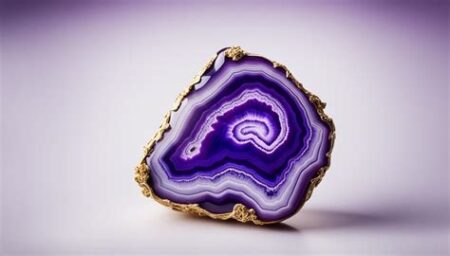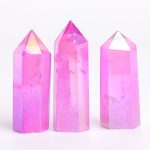Introduction
The birthstone for those born under the Capricorn zodiac sign, garnet is a captivating gemstone renowned for its deep red hue and exceptional brilliance. This guide delves into the captivating world of garnet, exploring its properties, benefits, and historical significance.

Properties and Characteristics of Garnet
Garnet is a group of silicate minerals sharing several common characteristics:
- Crystal Structure: Cubic
- Hardness: 6.5-7.5 on the Mohs scale
- Color: Varies from dark red to orange, yellow, and green
- Luster: Vitreous to resinous
- Transparency: Transparent to opaque
- Refractive Index: 1.73-1.89
- Specific Gravity: 3.5-4.3 g/cm³
Types of Garnet
Garnet encompasses a range of gemstones, each with its unique properties:
Pyrope: Deep red, prized for its exceptional fire
Almandine: Reddish-brown, commonly found in metamorphic rocks
Spessartine: Orange-red, associated with manganese-rich rocks
Grossular: Green or yellow-green, often found in skarns and pegmatites
Andradite: Black, brown, or yellow, occurs in volcanic rocks
Uvarovite: Emerald green, found exclusively in serpentinite rocks
Benefits of Garnet
Garnet is believed to possess numerous benefits, including:
- Improved Physical Health: Supports blood circulation, strengthens the immune system, and enhances wound healing.
- Emotional Stability: Calms anxiety, reduces stress, and promotes emotional balance.
- Creativity and Inspiration: Stimulates creativity, enhances focus, and brings about new ideas.
- Protection and Healing: Provides protection against negative energies and aids in healing emotional wounds.
- Spiritual Growth: Facilitates meditation, promotes spiritual awareness, and connects to higher realms.
History and Mythology
Garnet’s history is as rich as its color:
- Ancient Civilizations: Garnets were treasured by ancient Egyptians, Greeks, and Romans, who believed they protected against danger.
- Medieval Europe: Garnet was known as the “firestone” and was used in jewelry and religious artifacts.
- Modern Times: Today, garnet remains a popular gemstone in jewelry, amulets, and healing practices.
Applications of Garnet
Beyond jewelry, garnet finds applications in various fields:
Abrasives: Due to its hardness, garnet is used as an abrasive in grinding and polishing.
Gemology: Garnet is used as a calibration standard for measuring refractive index.
Laser Technology: Certain types of garnet are used in laser systems, particularly in medical and research applications.
Scintillators: Garnet is employed in scintillation detectors, which measure ionizing radiation.
Caring for Garnet
To maintain garnet’s beauty and value, follow these care tips:
- Cleaning: Use a soft brush and mild dish soap or jewelry cleaner. Avoid ultrasonic cleaners.
- Storage: Store garnet separately from other jewelry to prevent scratches.
- Sunlight: Limit exposure to direct sunlight, as it can fade some types of garnet.
- Heat: Avoid extreme heat, as it can damage the stones.
Tables
| Property | Value |
|---|---|
| Hardness | 6.5-7.5 Mohs |
| Refractive Index | 1.73-1.89 |
| Specific Gravity | 3.5-4.3 g/cm³ |
| Crystal Structure | Cubic |
| Type | Color |
|---|---|
| Pyrope | Deep red |
| Almandine | Reddish-brown |
| Spessartine | Orange-red |
| Grossular | Green or yellow-green |
| Andradite | Black, brown, or yellow |
| Uvarovite | Emerald green |
| Benefit | Description |
|---|---|
| Physical Health | Supports blood circulation, strengthens immune system, enhances wound healing |
| Emotional Stability | Calms anxiety, reduces stress, promotes emotional balance |
| Creativity and Inspiration | Stimulates creativity, enhances focus, brings about new ideas |
| Protection and Healing | Provides protection against negative energies, aids in healing emotional wounds |
| Spiritual Growth | Facilitates meditation, promotes spiritual awareness, connects to higher realms |
| Application | Description |
|---|---|
| Jewelry | Prized for its beauty and brilliance in various jewelry designs |
| Abrasives | Used for grinding and polishing due to its exceptional hardness |
| Gemology | Employed as a calibration standard for measuring refractive index |
| Laser Technology | Utilized in laser systems, particularly in medical and research applications |
| Scintillators | Used in scintillation detectors to measure ionizing radiation |
Effective Strategies
- Choose the Right Color: Select a garnet that resonates with your specific gemstone preference or birth month.
- Consider Setting: Opt for a setting that complements the garnet’s brilliance, such as a prong setting or bezel.
- Wear Regularly: Wear your garnet jewelry often to absorb its benefits and showcase its beauty.
- Clean Regularly: Follow proper care instructions to maintain the garnet’s luster and prevent damage.
- Consult a Gemologist: Seek advice from a professional gemologist to ensure authenticity and learn more about the specific garnet you own.
Why Garnet Matters
Garnet matters because:
- Historical Value: Its rich history connects us to ancient cultures and beliefs.
- Healing Properties: It is believed to possess beneficial effects on both physical and emotional well-being.
- Birthstone Symbolism: It represents those born under the Capricorn zodiac sign, symbolizing determination and resilience.
- Aesthetic Appeal: Its deep red hue and vibrant sparkle make it a captivating gemstone for jewelry and other applications.
- Scientific Impact: Garnet finds diverse uses in science and technology, contributing to advancements in fields like optics and medicine.
Benefits of Wearing Garnet
The benefits of wearing garnet include:
- Enhanced Energy: It is believed to stimulate energy, improve vitality, and reduce fatigue.
- Emotional Healing: It is said to promote emotional balance, reduce stress, and alleviate anxiety.
- Improved Circulation: It is believed to enhance blood circulation, aiding in cardiovascular health.
- Increased Creativity: It is said to stimulate creativity, enhance inspiration, and facilitate new ideas.
- Protection: It is believed to provide protection against negative energies and harmful influences.
FAQs
Q: What is the best quality of garnet?
A: The best quality garnet is transparent, strongly colored, and free of inclusions. Pyrope and almandine are generally considered the most valuable varieties.
Q: How can I identify real garnet?
A: Real garnet is relatively hard and should not scratch easily. It also has a vitreous to resinous luster and a distinct crystal structure.
Q: Can garnet be used in healing?
A: While scientific evidence is inconclusive, garnet has been traditionally used in healing practices to promote physical, emotional, and spiritual well-being.
Q: What other uses does garnet have outside of jewelry?
A: Garnet is used in abrasives, gemology, laser technology, and scintillation detectors.
Q: How often should I clean my garnet jewelry?
A: Clean your garnet jewelry regularly with a soft brush and mild dish soap or jewelry cleaner. Avoid ultrasonic cleaners.
Q: Can I wear garnet with other gemstones?
A: Garnet can be paired with other gemstones, but it is recommended to consult a jewelry expert to determine the best combinations.
Q: Is garnet a lucky stone?
A: Garnet is believed to bring good luck, prosperity, and protection to those who wear it.
Q: What is the metaphysical meaning of garnet?
A: Garnet is associated with grounding, passion, and strength. It is believed to stimulate energy, promote emotional balance, and support personal growth.




























